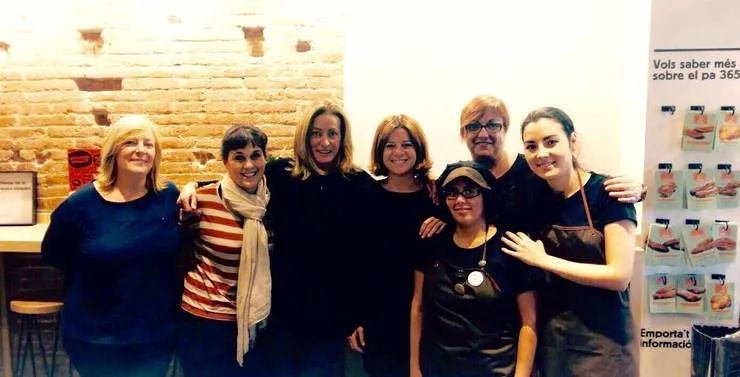The Tale of the Lean Baguettes of Barcelona
Flavian Hautbois7 min read

How a Spanish Coffee Chain started to go Lean
This article wants to be a friendly and concrete introduction to Lean. If you have only heard of the concept, I hope you get a clearer view of what Lean is. If you’re an expert, I hope it provides you with additional facts for you to spread the word about this incredible philosophy. In any case, I left out the most theoretical aspects of Lean to provide a pragmatic case, so there’s plenty more to be learned! And now, lets hop to our tale, shall we?
Pain and reaction
Emi and Juan Antonio Tena, wife and husband, founded 365 in 1999. 365 is a Coffee Chain set in Barcelona. The founders were born in service. In their childhood they waited tables, served coffee, and helped in the kitchen. 365 had 3 cafés opened in 2003, 9 in 2005, and in 2009, there were 33 of them. Contrary to what their growth suggests, things didn’t go smoothly. The staff was angry. The quality was poor. They were disorganized. As a result, customer satisfaction was low. 365 is a mix between a café and a bakery: they sell sandwiches and pastries that you can eat in the shop. Baguettes and pastries are produced in a single bakery, and are then transported to the shops. Since they were still growing in 2009, the founders planned on buying a whole new building to increase their production and storage space. At this point, by chance, Juan Antonio came across the book Lean thinking.
The book theorizes Lean manufacturing, which is one of the many efforts of extending what Toyota had been doing successfully since the 1950s. Keep in mind that Toyota’s challenge was to manufacture cars fast in a post-war Japan, where resources were rare and expensive. Yet, Japan became a huge economic power in thirty years, and Toyota became one of the main car manufacturers. Lean, at its core, aims at producing goods one by one, as fast as possible, and with no waste. Imagine the perfect Lean system as a production line where your product is being built without defects by karate masters. Lean is hard to explain because reducing waste is achieved through desperately simple steps. Bear in mind that Lean is hard because it involves change, it involves breaking the “it’s always been done that way” state of mind, and it involved breaking it several times every single day. So how did Emi and Juan Antonio onboard their employees, whose preoccupations were doing their day-to-day work? They started by telling their bakers to go home two hours earlier for three weeks.
Lowering the surface of the sea to see the rocks
First, let me reassure you: the bakers were still getting their full wage, even though they were working less. The fridges got empty in three weeks, as the bakers were producing less than what was needed for each day. And that was precisely the goal of this risky maneuver. See, those storage spaces were very costly, and they wasted time. Picture yourself picking frozen baguettes in a very large fridge, trying to find the freshest ones at the back, which you can barely see. You could argue that it’s a matter of organization, yet the bigger the storage, the harder it is to actually visualize what’s in it, and the more you get constrained by how your facility is designed. At first, the bakers thought the founders had gone crazy. Little by little, the fridges’ contents decreased and they eventually got rid of the freezer. The expensive building they considered buying? They did not need it any more. The quality of the bread? Without freezing, it increased dramatically.
This is not a fairy tale though. Emi and Juan Antonio did not snap their fingers, made the fridges disappear, and suddenly everyone got happy. Here’s why. A baguette gets significantly less fresh after one day. We have a single bakery, without much storage space for the baguettes. You then have to bring them more often to the shops which means you get more heavily impacted by problems in the production process. And this is where it gets interesting! Remember the situation : you are an unhappy worker who has to produce a lot. Suddenly, your stressed boss Juan Antonio tells you that you have to go home earlier every day until the fridges to became empty. When they did, every problem, like a broken oven or overcooked baguettes, could no longer be solved thanks to your stock, and so they hurt more than before. Wouldn’t you have asked for the old system to be brought back? This is where the founders had to be smart.
Lean is a just-in-time manufacturing process, meaning that ideally you would produce baguettes, or cars, one by one. Just-in-time is also a hallmark of Fordism, a system that has been rightfully criticized for the big strain it put on workers. Lean, and Toyota, use just-in-time to show the problems in the manufacturing process, and give the workers the ability to stop the production chain if they spot a problem, and give them tools to solve them. You can see it as lowering the surface of the sea to see the rocks. Emi and Juan Antonio hired Lean coaches to help the bakers solve the day-to-day production issues, they encouraged the employees to take Lean classes, and went to Lean workshops. In other words, if your production chain was a water hose, using just-in-time would be adding pressure to the water travelling inside it to find the holes.
Embracing the problems
It’s impossible to go into the details of the countless specific problems 365 employees solve every day, so I’ll relate one. Leonor « Leo » Tena, daughter of the founders, who also works at 365, kindly told me about it during a video call. Strangely, she kept excusing herself for her Spanish accent when I had no trouble understanding her at all, and I thought my accent was far worse. « In the factory they have different sections. One of them takes the bread from the fermentadora and puts it in the oven. At this step the size was a frequent problem » she explains. As a result, the baguettes coming out of the oven tiny and dry. Why? This was because the fermentation was going wrong. Why? Because the bread had to have a specific size to be put in the fermentation room aka the fermentadora. Eventually one of the bakers got fed up with the defect. « At first the baker used a cardboard that he cut as a guide to check the size of the baguette. The manager said it’s a good idea and they made a metal one. Now it’s even used for other things as the bread », Leo told me.
It does not seem like much, but remember that they solve these kinds of problems every day. If they did not have Lean, they would have maybe went on with the problem, because since they had stock a few baguettes gone wrong did not have a big impact. The manager could also have spotted the problem and engineered a complicated solution. Because the baker was working close to the problem, he was able to find a simple and pragmatic solution. His manager helped him in making it a standardized one. This type of solution is called an andon in Lean, and here it takes the form of a simple quality check.
Eventually, after months of efforts, people felt like Lean really worked. « They were doing les movement, producing the double. The saw the results; it’s easy to see the results: they used less hours to produce the same things. In the end, you agree with the methods », summed up Leo.
Lean is now applied everywhere in 365, from the providers, to the workshop, the shops, accounting, or human resources. This article has been fueled by a presentation and a visit of 365 during the Barcelona Lean Summit, which I attended with my fellow Theodoers. There is a lot more to write about 365 and Lean, so do feel free to express your interest in another article like this one!
To go further:
- this article from Planet Lean is an interesting analysis of 365
- a summary of Lean Thinking
- an article on minimizing inventory
- “it’s always been done that way” and the Five Monkeys fable
This article has been cross-posted to my Medium page.
